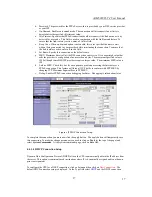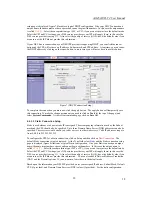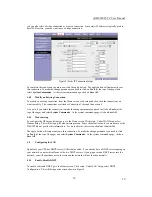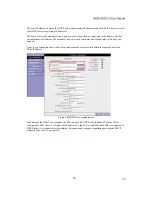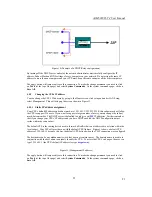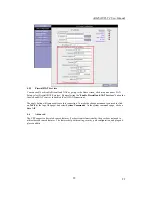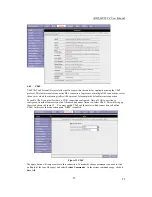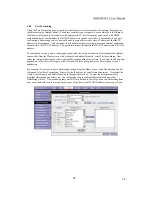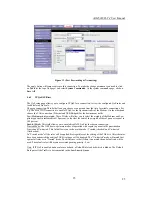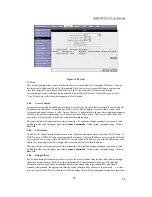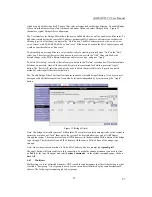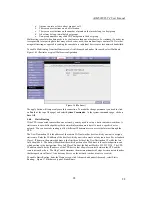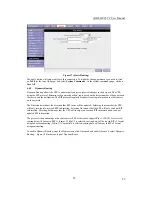
AAM6020VI-T4 User Manual
14
14
4.3.2
Local Area Network connection
On one side of your router, you have your own Local Area network (LAN) connections. This is where you
plug in your local computers to the router. The router is normally configured to automatically provide all
the PC's on your network with Internet addresses.
4.4
Configuring the WAN
Before the CPE will pass any data between the LAN interface(s) and the WAN interface, the WAN side of
the modem must be configured. Depending upon your DSL service provider or your ISP, you will need
some (or all) of the information outlined below before you can properly configure the WAN:
•
Your DSL line VPI and VCI
•
Your DSL encapsulation type and multiplexing
•
Your DSL training mode
For
PPPoA
or
PPPoE
users, you also need these values from your ISP:
•
Your username and password
For
RFC 1483
users, you may need these values from your ISP:
•
Your DSL fixed Internet IP address
•
Your Subnet Mask
•
Your Default CPE
•
Your primary DNS IP address
Since multiple users can use the CPE, the CPE can simultaneously support multiple connection types;
hence, the user must set up different profiles for each connection. The CPE supports the following
protocols:
•
DHCP
•
RFC 2364 PPPoA
•
RFC2516 PPPoE
•
Static
•
Bridged
•
CLIP
.
4.4.1 New
Connection
A new connection is basically a virtual connection. Your CPE can support up to 8 unique (with different
vpi/vci) virtual connections. If you have multiple different virtual connections, you may need to utilize the
static and dynamic routing capabilities of the modem to pass data correctly.
4.4.1.1 Bridged CPE profile and Connection
A pure bridged connection does not assign and IP address to the WAN interface. NAT and firewall rules
are not enabled. This connection method makes the router act as a hub, and just passes packets across the
WAN interface to the LAN interface.
To configure the CPE as a bridge, from the Home page, click on Setup and then click on
New Connection
.
The default PPPoE connection setup is displayed. At the Type field select
Bridge
and the Bridge
connection setup page is displayed (see Figure 4). Give your Bridge connection a unique name; the name
must not have spaces and cannot begin with numbers. In this case the unique name is called
bridge1
.
Select the encapsulation type (LLC or VC); if you are not sure just use the default mode. Select the VPI
and VCI settings; your DSL service provider or your ISP will supply these; in this case the DSL service
provider is using
0,35
. Also select the quality of service (QOS); leave the default value if you are unsure or
the ISP did not provide this information.

















